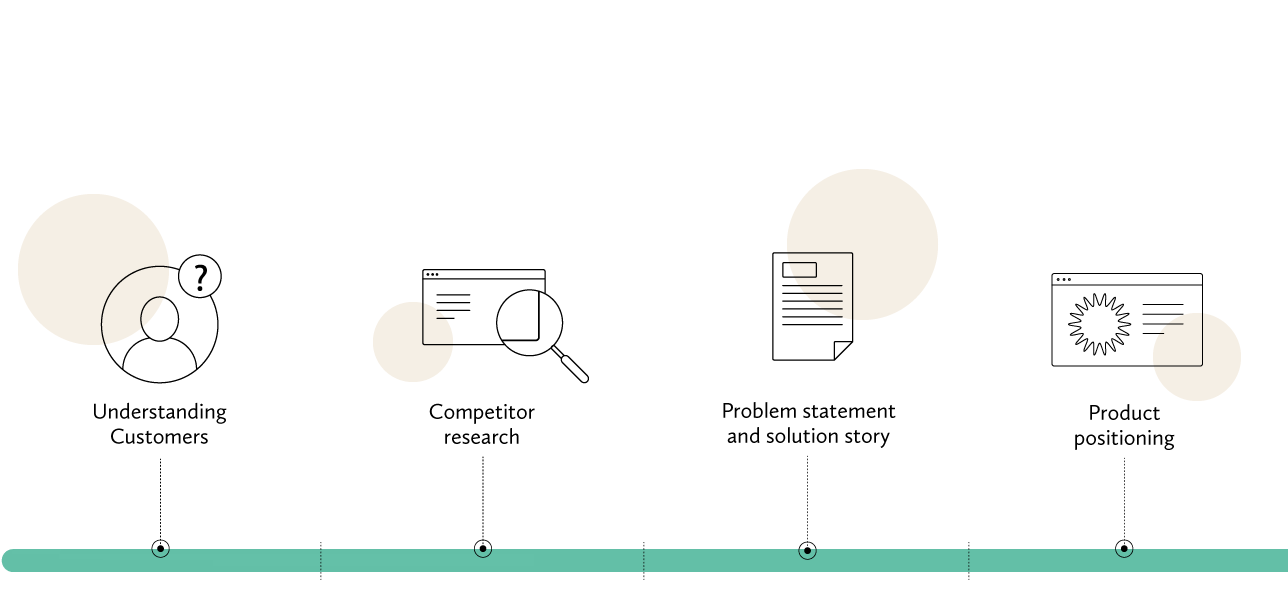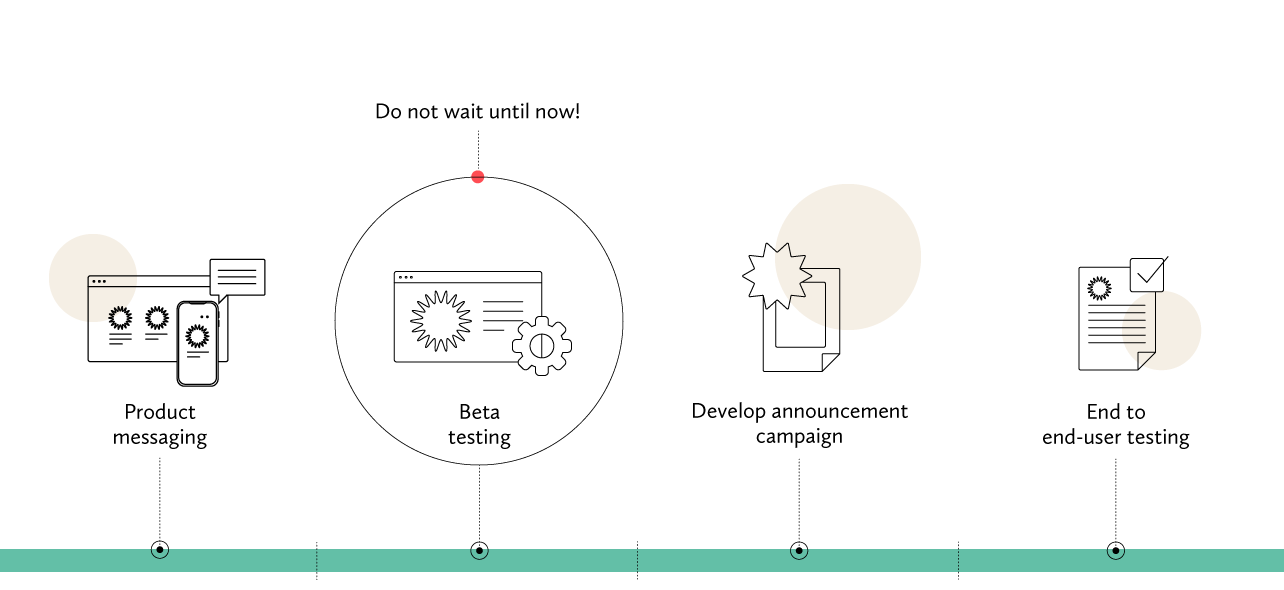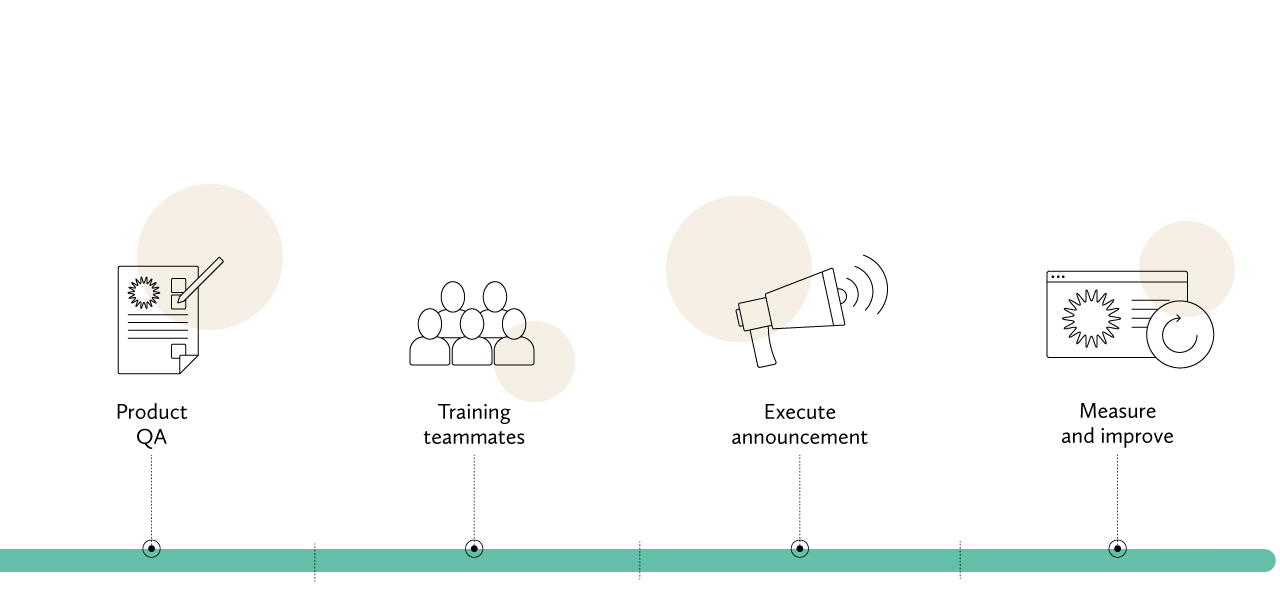Product marketing starts before product scope
The popular analogy that product managers put product on the shelf and product marketers get it off the shelf is fundamentally wrong. The best products are built with the market in mind, and product marketing should contribute long before anything gets put on a shelf.
This is an updated version of a blog post I originally wrote for Intercom’s blog.
What is product marketing?
Product marketing sits at the intersection of product, marketing, and sales. It is the sum of all efforts to research, frame the message, and promote a new product to ensure it resonates with the target customer. Product marketers have a wide range of responsibilities that involve close collaboration with product teams and other marketing functions.
Product marketing means something different at every company
“Defining the role of product marketing is elusive, and therefore how it fits in an organization is too.”
From my experience as a product marketer at Intercom and then later as a consultant for companies including Envoy, Gladly, and Applitools, I can tell you that product marketing looks different at every company. Sometimes product marketing sits on the marketing team, while I’ve also seen it report into product. Some product marketing teams focus on sales enablement (oftentimes for enterprise products), while others focus on product announcements. Defining the role of product marketing is elusive, and therefore how it fits in an organization is too.
Reactive product marketing falls flat
Regardless of industry, product, or organizational structure, a common mistake I see is that companies wait too long—usually during beta testing—to involve product marketing. PMMs: Have you ever had a product manager say: “X is almost ready, can you announce this?” That is a recipe for an announcement that falls flat. As you can see below in the 12 stages of taking a new product to market, if you wait until the beta to involve product marketing, you’re missing out on the foundational work that will make your launch a success.
Understanding customers
Competitor research
Problem statement and solution story
Product positioning
Product messaging
Beta testing (←do not wait until now!)
Develop announcement campaign
End to end-user testing
Product QA
Training teammates
Execute announcement
Measure and improve



The real impact of product marketing
“Our real impact comes in helping to shape what is built to announce a product that truly connects with our customers.”
At most companies, product marketers are responsible for product landing pages. And while it’s the most visible work we do, it’s not even close to the most impactful. Landing pages are just the tip of the iceberg – the visible culmination of our work. Our real impact comes in shaping what is built to announce a product that truly connects with our customers. When product marketers are a partner in the full product development cycle, rather than focusing primarily on landing pages and post-launch activities, the product to-be-released is more likely to achieve commercial success.
Start product marketing before the product scope.
“Great product marketing starts long before the product is built.”
During my time at Intercom, I led the go-to-market efforts from start to launch for two of their biggest releases: Articles, an integrated knowledge base for self-service support, and Operator, the bot for better customer experiences. I was there from the very beginning (while the problem statement was being defined) and saw them through to launch. Initially, the plan was to launch them together, but we ultimately decoupled them to ensure each product was the absolute best it could be. Articles (formerly called Educate) was 14 months in the making and launched in December 2016. Operator launched 8 months later.
“The solution story is a vision for the future that helps influence what gets built.”
Once Articles made it onto the roadmap and it was time to start working on it, the product manager wrote the problem statement – thoroughly outlining the problem that needs to be solved, but with no indication as to how it should be solved. I, the product marketer responded with the solution story–if resources were not constrained, this is the story we’d like to tell that convinces people to buy the product or switch from a competitor. The solution story is a vision for the future that helps influence what gets built with the goal of achieving this story. And since it has consensus from product, we revisited throughout the 14-month project to prioritize feature scoping and resolve conflicts about priorities. The solution story not only influenced what got built, but it became our north star for go-to-market efforts and helped motivate and inspire internal teams.
Being involved from the very beginning to launch and beyond was a career-defining experience and taught me that great product marketing starts long before the product is built.
How to find the solution story: competitors
“Competitor research showed that nothing on the market leveraged questions asked from a help center to improve content. The product team knew they had to build this, and I knew I had to make it a key part of the messaging.”
For example, competitor research for Articles showed that every other knowledge base was hard for customer support teams to keep updated (bad for teammates) and was primarily marketed as ticket deflection (bad for users). Even Slack’s help center at the time, which was quite good, said “thanks for your feedback” when you gave a thumbs down on an article. This means they had no way of knowing what was unclear in the article. 👎
This helped solidify the product team’s decision to keep the Intercom Messenger on the Help Center to give users a way to get help if the article didn’t answer their question. It also helped them prioritize failed searches and insights on user conversations started from Articles to make sure those conversations would help the team improve their content for the next user, not slow them down.
Competitor research showed that nothing on the market leveraged questions from a help center to improve the content. The product team knew they had to build this, and I knew I had to make it a key part of the messaging.
Proactive product marketing
“The best product marketing goes much deeper than sales enablement and marketing campaigns – it starts crafting the story when the problem is defined rather than waiting until the solution is built.”
The best product marketing goes much deeper than sales enablement and marketing campaigns – it starts crafting the story when the problem is defined rather than waiting until the solution is built. While the activities and tactics are constantly changing, the goal is always the same: help build and announce the product with the market in mind from the very beginning. That way, when it finally makes it to the shelf, it won’t stay there long.


